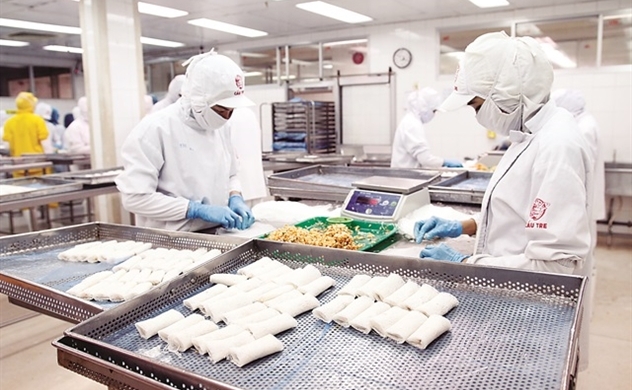Restoring the growth of the textile and garment industry
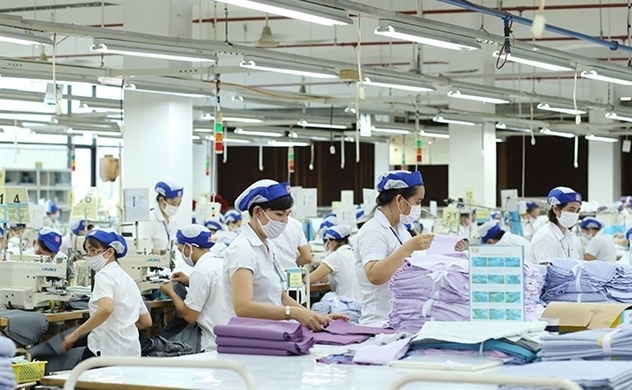
Producing garments for export at Viet Tien Garment Joint Stock Corporation.
The total export turnover of textiles and garments in the past 7 months amounted to 22.7 billion USD, down 14% compared to the same period in 2022. Although exports decline, the situation is improving as the downward momentum has narrowed to 14% compared to more than 20% in the first months of the year.
Due to the pandemic’s negative impacts and the instability in global politics, global economic growth continues to decrease, people tighten spending, stores experience high inventory rates, etc. Besides the lack of orders, enterprises still face more difficulties with deep-felt unit prices and the gradual-exhausted cash flow.
Investing in depth, improving quality
According to General Director of Hoa Tho Textile and Garment Joint Stock Corporation Nguyen Van Hai, in the first months of 2023, the textile and garment industry continues to face many difficulties as orders are reduced and pressured in price, even being reduced by 50-60% compared to before. Those have made the enterprise's operating efficiency not live up to expectations. With the efforts and consensus of the staff and employees flexibly deploying solutions to adapt to the market, the enterprise has been gradually overcoming difficulties, striving for a total revenue of 4.5 trillion VND and 200 billion VND in profit before tax this year.
General Director of Viet Tien Garment Joint Stock Corporation Bui Van Tien said, that due to the country and global economic situation still facing many difficulties, stabilising the labour, market, customer, job security, and maintaining production activities are the main tasks of the enterprises in the upcoming time. Additionally, Viet Tien also sets a target this year to reach over 8 trillion VND in revenue, 200 billion VND in pre-tax profit, and 11.5 VND million/person in employees’ average monthly income.
To accomplish those goals, the enterprise will implement the human resource development strategy, reorganise and restructure the corporation’s management model, and at the same time promote financial restructuring to ensure cash flow for the whole system. The unit will also intensively invest in equipment to improve product quality, and diversify markets, products and customers, to boost production and business activities.
According to the 2023’s second-quarter financial report of the Vietnam National Textile and Garment Group (Vinatex), the group's net revenue reached nearly 3.910 billion VND, down 17% compared to the same period last year. The cost of goods sold reached 3.706 billion VND, down 200 billion VND, making gross profit decrease to 203 billion, down 72% compared to the same period in 2022. Accumulated in the first six months of the year, Vinatex’s net revenue returned to over 8.1 trillion VND, down 15,5%; profit after tax reached 115 billion VND, equalling 13% compared to the same period in 2022.
Assessing the market signals, Vinatex General Director Cao Huu Hieu said that in 2023, the world’s growth will be lower than it in 2022, and the purchasing power in major markets such as the US and Europe will continue to decrease. The market’s unfavourable factors continue to lead to a quite gloomy situation for the industry in the past seven months.
To achieve the target of 17.5 trillion VND in revenue, and 610 billion VND in pre-tax profit at the end of this year, enterprises must keep up with market developments, take appropriate measures in implementing production and business plans, form an all-in knitting production chain, improve human resources to ensure operational quality, as well as perform digital transformation tasks for production management, human resources, finance and accounting, etc.
Intensifying support policies
The pandemic’s negative impacts and the instability in global politics have caused global economic growth to continue declining (the rise in 2021 is 6%, and in 2022 is 3%; but in 2023, it is forecasted to be only approximately 2%). The textile and garment industry is also affected by the decrease in orders from major markets such as the US and EU. In the past seven months, the total export turnover of the whole industry reached about 22.7 billion USD, down 14% compared to the same period in 2022; production and export are forecasted to gradually recover, but difficulties will prolong until the end of the year.
Regarding this issue, the Vice President and concurrently General Secretary of the Vietnam Textile and Apparel Association (Vitas) Truong Van Cam said, that many enterprises have not had enough orders for the third and fourth quarters. Enterprises are facing not only a lack of orders but also being forced to accept orders that are not their strengths, even pressured in price, some orders are discounted up to 50-60% compared to before. Vietnam’s textile and garment exports to major markets all dropped sharply, such as the US down 27.1%, the EU down 6.2%, Canada down 10.9%, China down 23%, etc.
This deep reduction is not only affected by the economy's impacts but also the pressure of “greening” the industry, the supply chain inspection directive of the Organisation for Economic Co-operation and Development (OECD), the EU and the German supply chain law (taking effect on January 1, 2023). In addition, although the State Bank has reduced the operating interest rate four times, the loan interest rates are still high - due to high deposit interest rates from the end of 2022, enterprises cannot access support packages. assist, etc.
Under those difficulties, Vitas aims to achieve 39-40 billion USD in export turnover by the end of this year. Therefore, enterprises need to focus on three core issues such as finding solutions to retain employees, organising vocational skills training classes, training human resources for green and digital transformation; accepting orders that are not strengths, and not making profits to ensure jobs for employees and retaining customers, etc, minimising the costs that are not necessary of enterprises.
To restore production and export capacity and improve the competitiveness of textile and garment enterprises, the Government and relevant ministries and sectors need to develop groups of comprehensive support solutions such as extending the deadline for submission of tax and land use levies; lower loan interest rates and actual conditions for accessing capital; reschedule debt repayment for enterprises; speed up the process of VAT refund; develop policies to encourage production shift towards green and sustainability, such as tax support for green businesses and preferential credit for green-production constructions
At the same time, enterprises also need to promote digital transformation in the textile and garment industry and increase connectivity to participate more deeply in global supply chains, thereby improving traceability in the chain, and making all stages transparent to meet international standards and requirements of the export market and customers.
Source: Nhân Dân
Same category news
-
Huyen Hoang
-
Arthur Do và Nick Wood
Latest news
-
Huyen Hoang

 TIẾNG VIỆT
TIẾNG VIỆT 
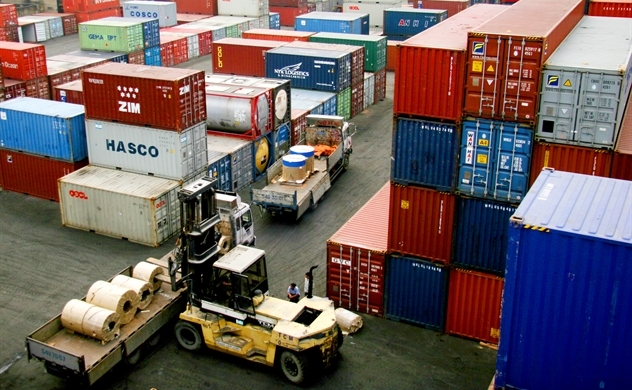
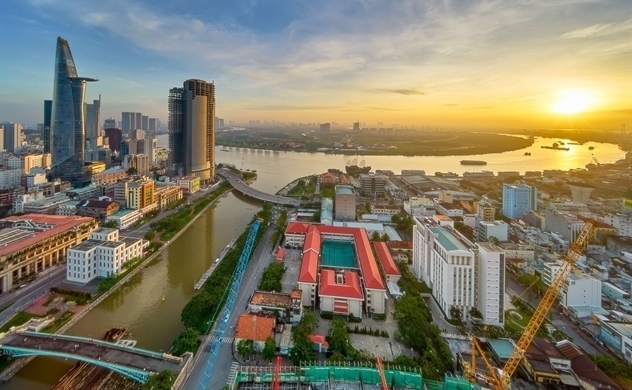
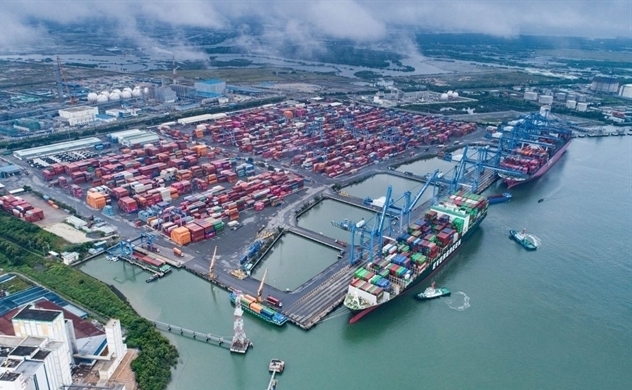
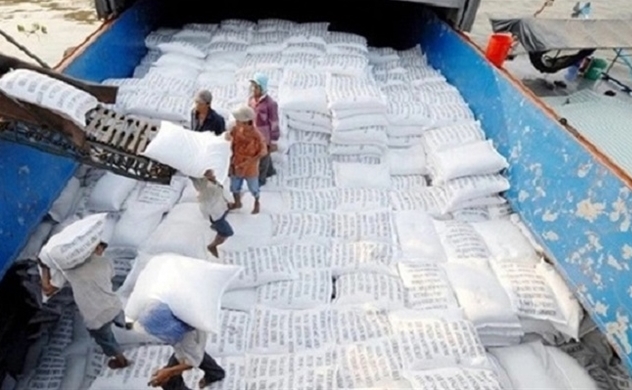
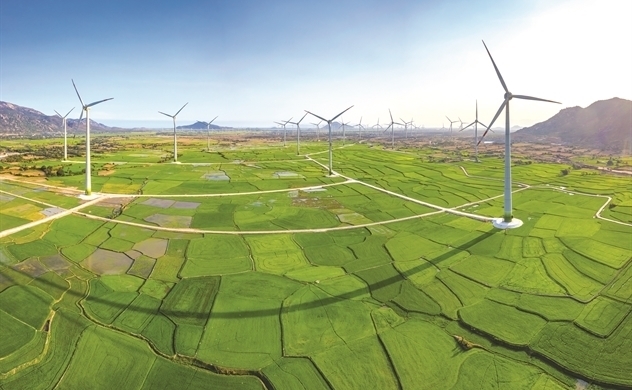

_291615658.jpg)

